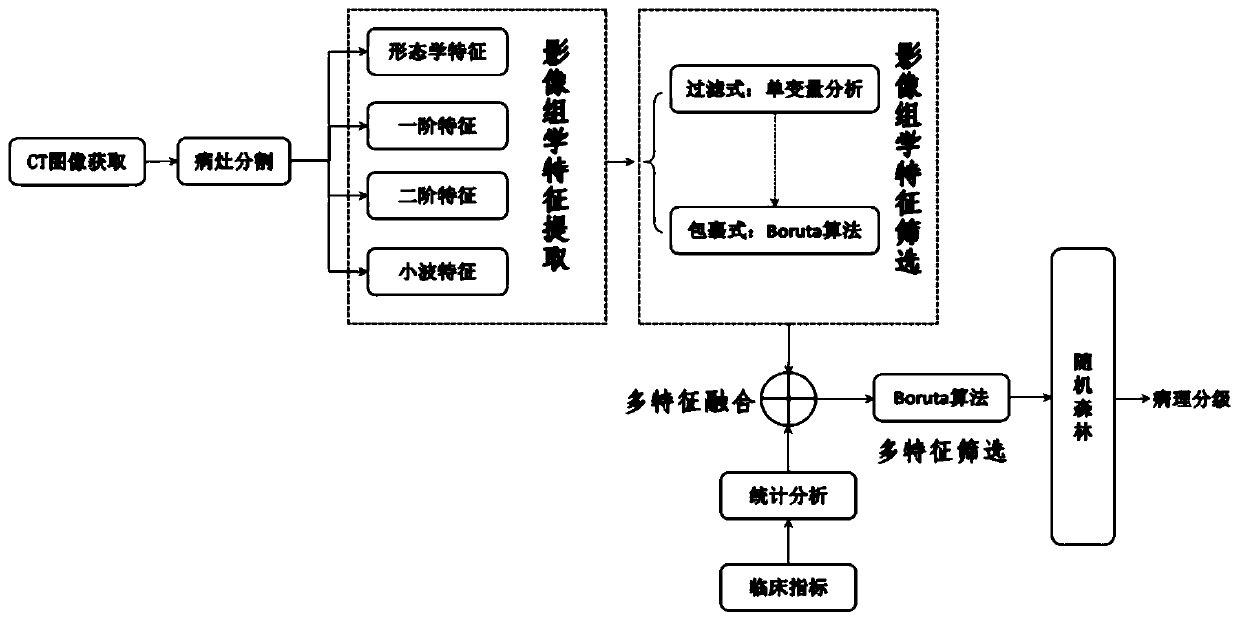Liver cancer image feature extraction and pathological classification method and device based on imaging omics
A technology of image feature extraction and radiomics, applied in the field of medical image processing, can solve the problem of rough evaluation of liver cancer differentiation
- Summary
- Abstract
- Description
- Claims
- Application Information
AI Technical Summary
Problems solved by technology
Method used
Image
Examples
Embodiment Construction
[0094] The method of the present invention will be further described below in conjunction with the accompanying drawings.
[0095] Step (1). Liver cancer images and their corresponding pathological classification labels are used as training data sets;
[0096] Step (2). Using the GrowCut algorithm to achieve semi-automatic segmentation of the liver cancer lesion area. in grid position (pixels or voxels in image processing). The cellular automaton is expressed as a triple A=(S,N,δ), where A represents a cellular automaton model, S is a non-empty state set, N is the domain system, δ:S N → S is the local transition function, which defines the rules for computing the state of a cell at t+1 time steps given the state of a neighborhood cell at time step t. The neighborhood system N used is the von Neumann neighborhood:
[0097]
[0098] cell state where l p Indicates the label of the current cell, θ p is the current cell strength, is the feature vector of the current c...
PUM
 Login to View More
Login to View More Abstract
Description
Claims
Application Information
 Login to View More
Login to View More - R&D
- Intellectual Property
- Life Sciences
- Materials
- Tech Scout
- Unparalleled Data Quality
- Higher Quality Content
- 60% Fewer Hallucinations
Browse by: Latest US Patents, China's latest patents, Technical Efficacy Thesaurus, Application Domain, Technology Topic, Popular Technical Reports.
© 2025 PatSnap. All rights reserved.Legal|Privacy policy|Modern Slavery Act Transparency Statement|Sitemap|About US| Contact US: help@patsnap.com



